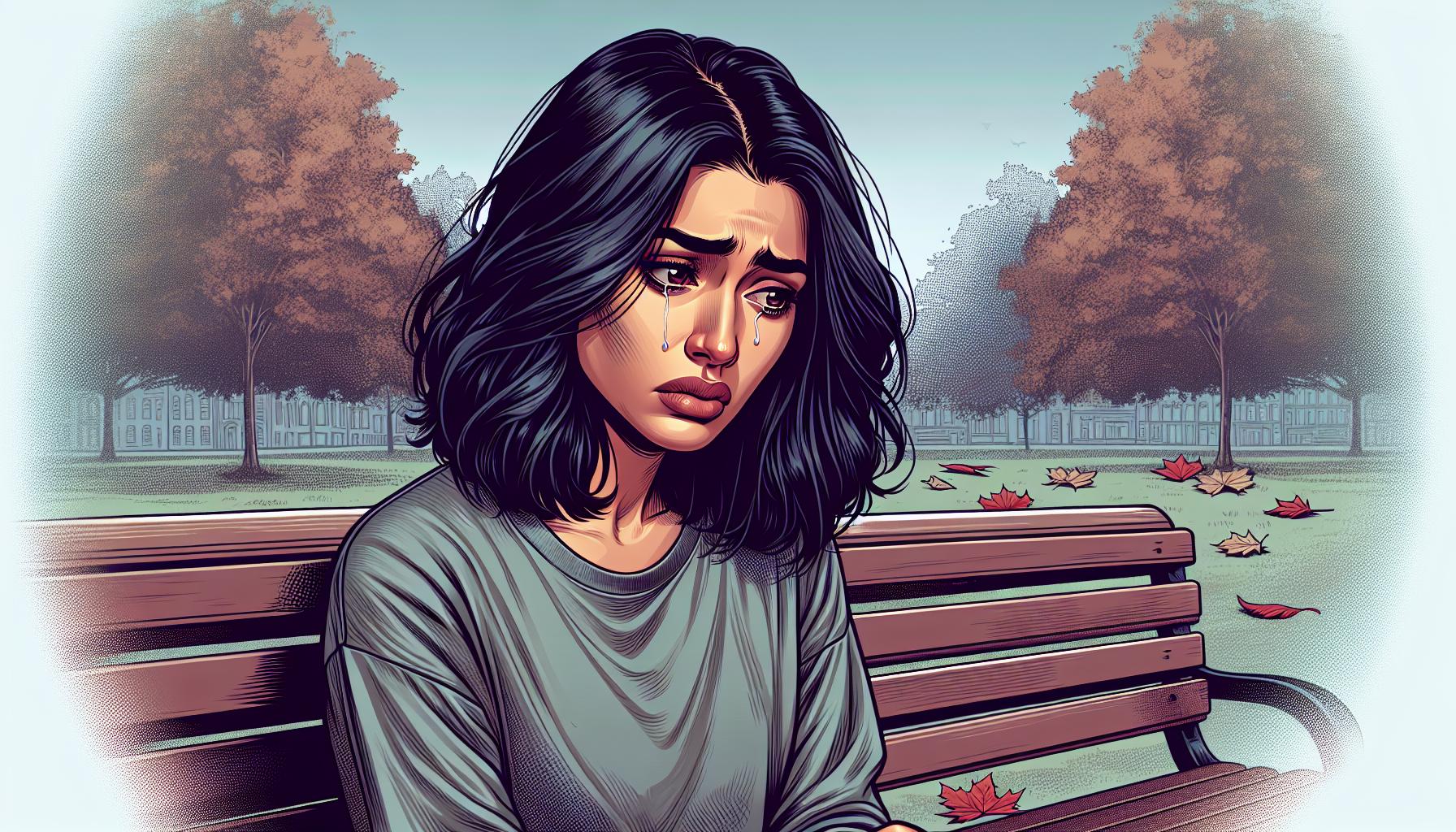When a TV series grips you with its twists and emotional depth, the ending becomes everything. What to Do When Someone Dies is no exception. This series takes you on a heart-wrenching journey of love, loss, and uncovering hidden truths, leaving viewers emotionally invested until the very last scene. But when the final moments arrive, they often spark questions, debates, and lingering thoughts.
I found myself reflecting on how the show wrapped up its intricate storylines. Did it provide closure, or did it leave us yearning for more answers? The ending of this series isn’t just about tying up loose ends—it’s about understanding the emotional weight carried by the characters and what it all means for the audience. If you’re still processing those final moments, you’re not alone. Let’s dive into what made the conclusion so impactful and why it continues to resonate.
Overview Of The Series
“What to Do When Someone Dies” is a gripping drama centered around grief, love, and mystery. Adapted from Nicci French’s novel, the series follows Ellie Manning as she tries to uncover the truth after her husband’s sudden death in a car crash, alongside an unknown woman.
Set in the UK, the series explores themes of betrayal, trust, and resilience. Viewers witness Ellie’s determination to confront unsettling truths while struggling with her own grief. The narrative is driven by emotional complexity, combining suspense with deep character development.
Each episode introduces twists that reveal hidden motives and connections, keeping audiences engrossed. The portrayal of loss and human vulnerability resonates strongly, making the series both relatable and thought-provoking. The intense pacing and evocative storytelling ensure its lasting impact.
Key Plot Points Leading To The Finale

The final episodes of “What to Do When Someone Dies” unravel the intricate threads of grief, mystery, and discovery. Each twist and character choice pushes the narrative toward its climactic resolution.
Character Arcs And Development
Ellie Manning’s journey epitomizes resilience amid chaos. Her transition from a grieving widow to an empowered truth-seeker highlights her emotional evolution. Ellie’s determination intensifies as she confronts betrayals and uncovers her husband’s double life.
Supporting characters also experience transformative arcs. Gwen, Ellie’s close friend, embodies loyalty while facing challenges to her own beliefs. Greg Manning’s backstory emerges through flashbacks, adding layers to his complex persona. Each arc contributes to Ellie’s choices, creating an interconnected narrative.
Major Twists And Revelations
Shocking twists amplify the intensity of the finale. Ellie discovers that her husband’s death wasn’t accidental, unraveling a web of deceit tied to the mysterious woman found in the car. The series reveals the woman’s identity, linking her to a deeper conspiracy that shatters Ellie’s trust in those closest to her.
Unveiling forged documents and hidden transactions adds tension, propelling Ellie toward dangerous truths. The climactic confrontation exposes the true culprits, blending emotional catharsis with suspense. These pivotal moments redefine relationships and conclusion.
Analysis Of The TV Series Ending

The ending of “What to Do When Someone Dies” combines emotional closure with narrative suspense, leaving a lasting impression on audiences. It binds thematic elements with the characters’ emotional arcs, making it an impactful conclusion worth dissecting.
Themes And Symbolism In The Finale
The finale weaves themes of betrayal, grief, and redemption. Ellie’s persistence in uncovering her husband’s secrets symbolizes resilience in the face of emotional devastation. The recurring imagery of closed doors and shattered glass represents the barriers she breaks to confront harsh realities. Forged documents and financial discrepancies mark a divide between trust and betrayal, emphasizing the fragility of relationships.
Death’s omnipresence in the narrative highlights human vulnerability, while the unraveling conspiracy underscores the complexities of truth and deception. Each character’s actions reflect themes of agency and moral consequence, providing a layered exploration of ethical dilemmas.
Viewer Reactions To The Ending
Audiences found the ending divisive yet memorable. Some praised its emotional depth and resolution of key storylines, while others felt certain narrative threads were left ambiguous, eliciting mixed yet engaged responses. Ellie’s transformation resonated strongly with viewers, with many expressing admiration for her journey from grief to empowerment.
Social media reactions highlighted discussions around the unexpected twists, particularly the conspiracy revelation. Critics lauded the finale’s balance of suspense and emotional catharsis, while fan forums buzzed with debates over unanswered questions, reinforcing the series’ lasting impact.
What The Ending Means For The Story

The ending of “What to Do When Someone Dies” reflects the intricacies of human emotions and conflicts while leaving room for interpretation. It balances closure with ambiguity, encouraging viewers to reflect on the characters’ arcs and outcomes.
Open Interpretations And Unanswered Questions
The finale introduces unanswered questions that provoke thought rather than resolve every detail. While Ellie’s efforts uncover the truth behind her husband’s death and deceit, it remains unclear if all culpable individuals face justice. The deeper conspiracy, hinted at through forged documents and financial irregularities, suggests unexposed layers that extend beyond the revealed players.
Some elements, like the personal motives of secondary characters, remain shrouded in ambiguity. For instance, Gwen’s sudden change of stance and her level of involvement in concealing the truth aren’t fully explored. Similarly, the unnamed woman’s true role and connection to the broader conspiracy invite speculation, adding to the suspenseful yet unresolved narrative.
How The Ending Ties Back To The Beginning
The ending creates a cyclical narrative by drawing connections to Ellie’s initial discovery of the car crash. Her journey from devastation to self-discovery parallels the revelations about her husband’s dual life, reinforcing themes of betrayal and trust. The pivotal motifs, like Ellie’s determination to piece together fragmented truths, echo her pursuit at the start.
Key visual symbols, like shattered glass and closed doors, appear both in the opening and closing scenes, emphasizing how Ellie confronts barriers within herself and others. Her decision to move forward, despite the lingering mysteries, mirrors her initial step into investigating her husband’s death. This thematic loop underpins the story’s exploration of resilience and emotional closure amidst unresolved truths.
Impact Of The Series As A Whole

The TV series “What to Do When Someone Dies” leaves a lasting impression through its emotional depth and suspenseful narrative. Its storytelling resonates beyond the finale, solidifying its place as a thought-provoking drama.
Legacy And Cultural Significance
This series contributes significantly to the portrayal of grief and resilience in dramatic storytelling. Through Ellie Manning’s journey, it highlights the complexities of coping with loss, trust, and betrayal, offering viewers a raw yet relatable narrative. The show’s unique blend of mystery and emotional exploration sets it apart, drawing attention to themes often underrepresented in mainstream television. Adapted from Nicci French’s novel, it bridges literature and screen, bringing nuanced characters and layered narratives to a broader audience. Discussions across social media and critical reviews reveal how deeply it connects with viewers, sparking debates about its themes and ending. Its cultural impact lies in how it sheds light on human vulnerability while questioning moral boundaries.
Comparisons To Similar Shows
When compared to other mystery dramas like “Broadchurch” and “The Widow,” this series stands out with its distinct focus on emotional complexities intertwined with suspense. “Broadchurch” excels in its intense small-town mystery, while “The Widow” explores facets of global intrigue, but “What to Do When Someone Dies” delves deeper into the personal psyche of grief and betrayal, giving it a unique narrative strength. Unlike shows that lean heavily on external plots, this series uses its characters’ internal struggles as the driving force. These comparisons help highlight its originality, demonstrating that while it shares common threads with similar dramas, its execution and emphasis on emotional resonance make it a standout.
Conclusion
The ending of “What to Do When Someone Dies” is a powerful blend of emotional resonance and lingering mystery. It challenges viewers to reflect on themes of grief, betrayal, and resilience while leaving room for personal interpretation. Ellie Manning’s journey is both heartbreaking and inspiring, showcasing the strength required to confront painful truths.
This series stands out for its ability to balance suspense with emotional depth, creating a narrative that stays with you long after the final scene. Its thought-provoking conclusion ensures it remains a standout drama, sparking discussions and leaving a lasting impression.
Frequently Asked Questions
What is the TV series “What to Do When Someone Dies” about?
The series follows Ellie Manning, a grieving widow seeking the truth after her husband’s sudden death in a car crash alongside an unknown woman. It explores themes of grief, betrayal, love, and mystery, showcasing Ellie’s resilience as she uncovers hidden truths about her husband’s double life.
Is “What to Do When Someone Dies” based on a book?
Yes, the series is adapted from Nicci French’s novel of the same title. It remains faithful to the book’s emotional depth and suspenseful narrative, while adding visual storytelling elements.
What themes are explored in the series?
The show delves into grief, betrayal, trust, resilience, and emotional closure. It examines the complexities of human relationships and the emotional journey of confronting harsh truths amidst loss.
How does the series’ ending impact viewers?
The ending balances emotional closure with lingering ambiguity, leaving viewers to reflect on the characters’ journeys. It combines suspense with thought-provoking themes, sparking discussions about unresolved questions and deeper conspiracies.
Does Ellie find closure by the end of the series?
Ellie achieves emotional closure by confronting her husband’s betrayal and understanding the truth, but some aspects of the story remain unresolved, reflecting life’s inherent complexities.
What are the key twists in the series?
Major twists include discovering that Ellie’s husband’s death was not accidental, uncovering a conspiracy involving the unknown woman, and revelations about hidden transactions and forged documents.
How does the series depict grief and resilience?
The narrative highlights Ellie’s transformation from a grieving widow to an empowered truth-seeker, showcasing human vulnerability and strength in coping with loss and betrayal.
Is the series similar to other dramas like “Broadchurch”?
Yes, it shares similarities with shows like “Broadchurch” and “The Widow,” but it stands out with its focus on the emotional complexities intertwined with suspense, making it unique and original.
What do the symbols, like shattered glass, represent?
Symbols like shattered glass and closed doors reflect barriers Ellie must overcome, both physically and emotionally, to confront her grief and betrayal, emphasizing themes of resilience.
Did the ending leave any unanswered questions?
Yes, the finale leaves some threads ambiguous, such as secondary characters’ motives and deeper conspiracies. This encourages viewers to interpret the story while reflecting on its emotional depth.
